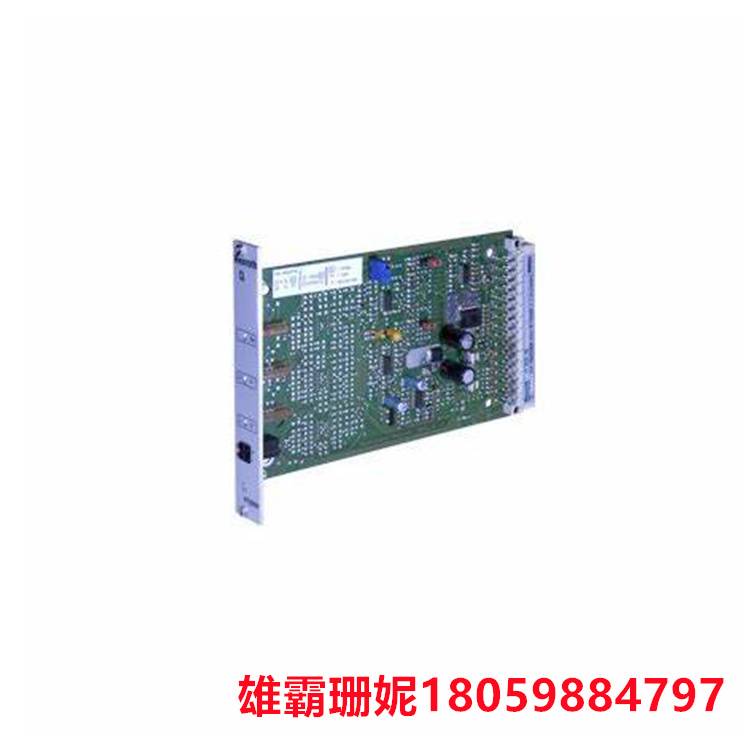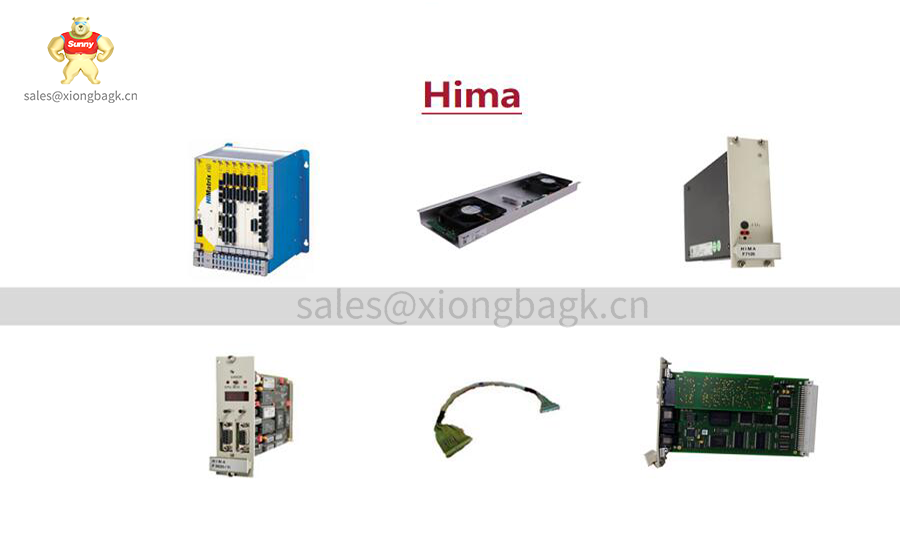VT 2000-52-A由力士乐,英德拉,博世在VT-2000系列。VT-2000是一种比例放大器,适用于控制没有电气位置反馈的单电磁压力控制阀。此VT 2000-52-A提供工厂指定的铭牌,脉冲频率为100 Hz或200 Hz;±10%,工作电压为24vdc + 40% - 5%,连接类型为32针公连接器,DIN 41612,形式D。
VT2000-52-A比例放大器是一种电子设备,用于放大输入信号的电压或电流,并按比例输出放大后的信号。它通常用于控制系统中,将传感器或控制器产生的微弱信号放大到足以驱动执行器或其他负载的水平。

描述
VT 2000-52-A由力士乐,英德拉,博世在VT-2000系列。VT-2000是一种比例放大器,适用于控制没有电气位置反馈的单电磁压力控制阀。此VT 2000-52-A提供工厂指定的铭牌,脉冲频率为100 Hz或200 Hz;±10%,工作电压为24vdc + 40% - 5%,连接类型为32针公连接器,DIN 41612,形式D。
VT2000-52-A比例放大器是一种电子设备,用于放大输入信号的电压或电流,并按比例输出放大后的信号。它通常用于控制系统中,将传感器或控制器产生的微弱信号放大到足以驱动执行器或其他负载的水平。
VT2000-52-A比例放大器的工作原理基于负反馈控制,它通过比较输入信号和输出信号之间的差异来调整输出信号的大小。当输入信号发生变化时,比例放大器会根据输入信号的变化程度成比例地调整输出信号的大小,从而实现对被控对象的精确控制。
VT2000-52-A 比例放大器通常具有高增益、低失调、高线性度和快速响应等特点,能够在各种应用场合中提供精确的控制性能。它们广泛应用于工业自动化、航空航天、汽车电子、医疗设备等领域。
选择合适的比例放大器需要考虑以下几个因素:
1. 增益范围:比例放大器的增益范围应满足应用需求。对于高增益应用,需要选择具有高增益的比例放大器,而对于低增益应用,则可以选择低增益的比例放大器。
2. 输入阻抗:比例放大器的输入阻抗应与输入信号源相匹配。对于高阻抗信号源,需要选择高输入阻抗的比例放大器,而对于低阻抗信号源,则可以选择低输入阻抗的比例放大器。
3. 输出阻抗:比例放大器的输出阻抗应与输出负载相匹配。对于低阻抗负载,需要选择低输出阻抗的比例放大器,而对于高阻抗负载,则可以选择高输出阻抗的比例放大器。
4. 线性度:比例放大器的线性度应满足应用需求。对于高精度应用,需要选择具有高线性度的比例放大器,而对于一般精度应用,则可以选择低线性度的比例放大器。
5. 共模抑制比:比例放大器的共模抑制比应满足应用需求。对于高共模信号环境,需要选择具有高共模抑制比的比例放大器,而对于低共模信号环境,则可以选择低共模抑制比的比例放大器。
6. 噪声水平:比例放大器的噪声水平应满足应用需求。对于低噪声应用,需要选择具有低噪声水平的比例放大器,而对于高噪声应用,则可以选择高噪声水平的比例放大器。
7. 工作温度范围:比例放大器的工作温度范围应满足应用需求。对于需要在宽温度范围内工作的应用,需要选择具有宽工作温度范围的比例放大器,而对于在特定温度范围内工作的应用,则可以选择窄工作温度范围的比例放大器。
8. 封装形式:比例放大器的封装形式应满足应用需求。对于需要在恶劣环境下工作的应用,需要选择具有坚固封装形式的比例放大器,而对于在一般环境下工作的应用,则可以选择普通封装形式的比例放大器。

Description
The VT 2000-52-A is made by Rexroth, Indra and Bosch in the VT-2000 series. The VT-2000 is a proportional amplifier suitable for controlling single electromagnetic pressure control valves without electrical position feedback. This VT 2000-52-A is supplied with a factory specified nameplate with a pulse frequency of 100 Hz or 200 Hz; ±10%, operating voltage 24vdc + 40%-5%, connection type 32 pin male connector, DIN 41612, form D.
The VT2000-52-A proportional amplifier is an electronic device that amplifies the voltage or current of an input signal and outputs the amplified signal proportionally. It is commonly used in control systems to amplify the weak signal generated by a sensor or controller to a level sufficient to drive an actuator or other load.
The VT2000-52-A proportional amplifier works on the basis of negative feedback control, which adjusts the size of the output signal by comparing the difference between the input signal and the output signal. When the input signal changes, the proportional amplifier will adjust the size of the output signal proportionally according to the change degree of the input signal, so as to achieve accurate control of the controlled object.
VT2000-52-A proportional amplifiers typically feature high gain, low offset, high linearity and fast response to provide precise control performance in a variety of applications. They are widely used in industrial automation, aerospace, automotive electronics, medical equipment and other fields.
Choosing the right proportional amplifier needs to consider the following factors:
1. Gain range: The gain range of the proportional amplifier should meet the application requirements. For high-gain applications, a proportional amplifier with high gain needs to be selected, while for low-gain applications, a proportional amplifier with low gain can be selected.
2. Input impedance: The input impedance of the proportional amplifier should match the input signal source. For a high-impedance signal source, a proportional amplifier with a high input impedance needs to be selected, while for a low-impedance signal source, a proportional amplifier with a low input impedance can be selected.
3. Output impedance: The output impedance of the proportional amplifier should match the output load. For low impedance loads, a proportional amplifier with low output impedance needs to be selected, while for high impedance loads, a proportional amplifier with high output impedance can be selected.
4. Linearity: The linearity of the proportional amplifier should meet the application needs. For high-precision applications, a proportional amplifier with high linearity needs to be selected, while for general precision applications, a proportional amplifier with low linearity can be selected.
5. Common mode rejection ratio: The common mode rejection ratio of the proportional amplifier should meet the application needs. For high common-mode signal environments, a proportional amplifier with a high common-mode rejection ratio needs to be selected, while for low common-mode signal environments, a proportional amplifier with a low common-mode rejection ratio can be selected.
6. Noise level: The noise level of the proportional amplifier should meet the application needs. For low noise applications, a proportional amplifier with a low noise level needs to be selected, while for high noise applications, a proportional amplifier with a high noise level can be selected.
7. Operating temperature range: The operating temperature range of the proportional amplifier should meet the application requirements. For applications that need to operate over a wide temperature range, a proportional amplifier with a wide operating temperature range needs to be selected, while for applications that operate over a specific temperature range, a proportional amplifier with a narrow operating temperature range can be selected.
8. Package form: The package form of the proportional amplifier should meet the application needs. For applications that need to work in harsh environments, a proportional amplifier with a robust package form needs to be selected, while for applications that work in general environments, a proportional amplifier with a plain package form can be selected.


| GE | IS200TDBTH6ACD |
| GE | IS200TPROH1BCB |
| GE | IS200TPROS1CBB |
| GE | IS200TREAH2AED |
| GE | IS200TREGH1BEC |
| GE | IS200TRPAH2AHE |
| GE | IS200TSVCH1AJE |
| GE | IS200TTURH1CFD |
| GE | IS200TVBAH2ACC |
| GE | IS200TVIBH2BBB |
| GE | IS200VAICH1DAB |
| GE | IS200VCRCH1B |
| GE | IS200VRTDH1D |
| GE | IS200VTCCH1CBB |
| GE | IS200VTURH2BAC |
Copyright © 2022-2024 厦门雄霸电子商务有限公司 版权所有 备案号:闽ICP备14012685号-33